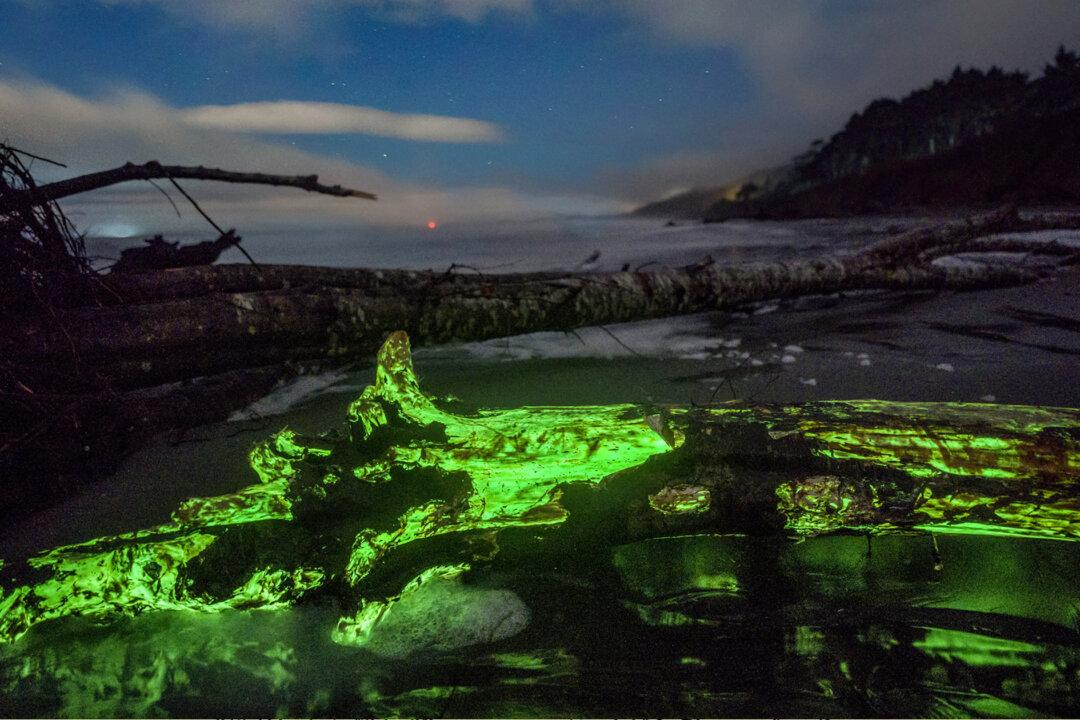Thwarted by cloud cover while trying to capture a lunar eclipse on film, a Washington photographer ended up with something incredibly magical. He turned his camera toward the ocean and snapped neon green bioluminescent fungus glowing on nearby driftwood, and the resulting images are spectacular.
Photographer Mathew Nichols, 28, who works in forest restoration by day, traveled to his local Kalaloch Beach in Forks, Washington, on Nov. 19, 2021, to see the eclipse. Noticing the cloud cover, he drew on his knowledge of bioluminescent algae and changed track.





